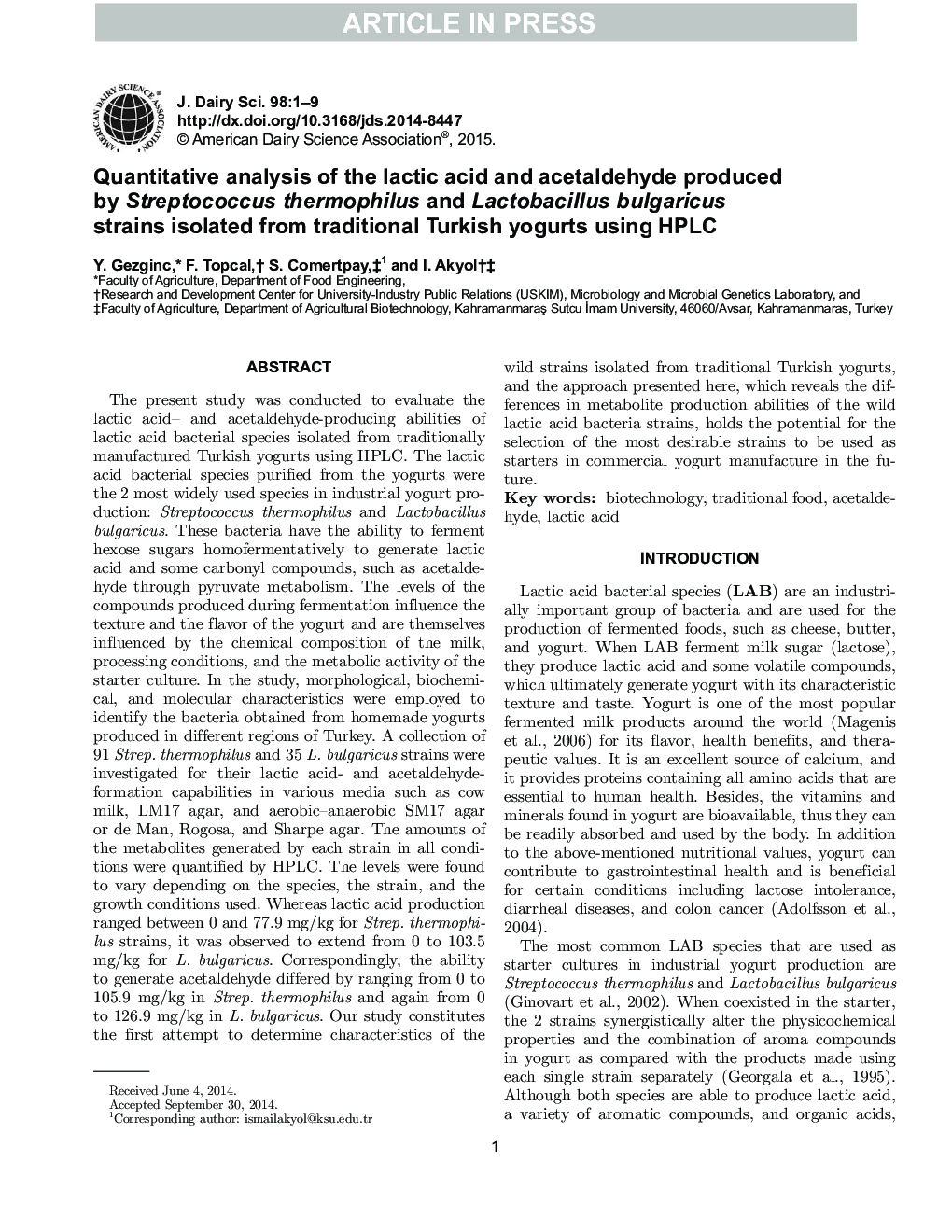| کد مقاله | کد نشریه | سال انتشار | مقاله انگلیسی | نسخه تمام متن |
|---|---|---|---|---|
| 10976392 | 1108041 | 2015 | 9 صفحه PDF | دانلود رایگان |
عنوان انگلیسی مقاله ISI
Quantitative analysis of the lactic acid and acetaldehyde produced by Streptococcus thermophilus and Lactobacillus bulgaricus strains isolated from traditional Turkish yogurts using HPLC
دانلود مقاله + سفارش ترجمه
دانلود مقاله ISI انگلیسی
رایگان برای ایرانیان
کلمات کلیدی
موضوعات مرتبط
علوم زیستی و بیوفناوری
علوم کشاورزی و بیولوژیک
علوم دامی و جانورشناسی
پیش نمایش صفحه اول مقاله

چکیده انگلیسی
The present study was conducted to evaluate the lactic acid- and acetaldehyde-producing abilities of lactic acid bacterial species isolated from traditionally manufactured Turkish yogurts using HPLC. The lactic acid bacterial species purified from the yogurts were the 2 most widely used species in industrial yogurt production: Streptococcus thermophilus and Lactobacillus bulgaricus. These bacteria have the ability to ferment hexose sugars homofermentatively to generate lactic acid and some carbonyl compounds, such as acetaldehyde through pyruvate metabolism. The levels of the compounds produced during fermentation influence the texture and the flavor of the yogurt and are themselves influenced by the chemical composition of the milk, processing conditions, and the metabolic activity of the starter culture. In the study, morphological, biochemical, and molecular characteristics were employed to identify the bacteria obtained from homemade yogurts produced in different regions of Turkey. A collection of 91 Strep. thermophilus and 35 L. bulgaricus strains were investigated for their lactic acid- and acetaldehyde-formation capabilities in various media such as cow milk, LM17 agar, and aerobic-anaerobic SM17 agar or de Man, Rogosa, and Sharpe agar. The amounts of the metabolites generated by each strain in all conditions were quantified by HPLC. The levels were found to vary depending on the species, the strain, and the growth conditions used. Whereas lactic acid production ranged between 0 and 77.9 mg/kg for Strep. thermophilus strains, it ranged from 0 to 103.5 mg/kg for L. bulgaricus. Correspondingly, the ability to generate acetaldehyde ranged from 0 to 105.9 mg/kg in Strep. thermophilus and from 0 to 126.9 mg/kg in L. bulgaricus. Our study constitutes the first attempt to determine characteristics of the wild strains isolated from traditional Turkish yogurts, and the approach presented here, which reveals the differences in metabolite production abilities of the wild lactic acid bacteria strains, holds the potential for the selection of the most desirable strains to be used as starters in commercial yogurt manufacture in the future.
ناشر
Database: Elsevier - ScienceDirect (ساینس دایرکت)
Journal: Journal of Dairy Science - Volume 98, Issue 3, March 2015, Pages 1426-1434
Journal: Journal of Dairy Science - Volume 98, Issue 3, March 2015, Pages 1426-1434
نویسندگان
Y. Gezginc, F. Topcal, S. Comertpay, I. Akyol,